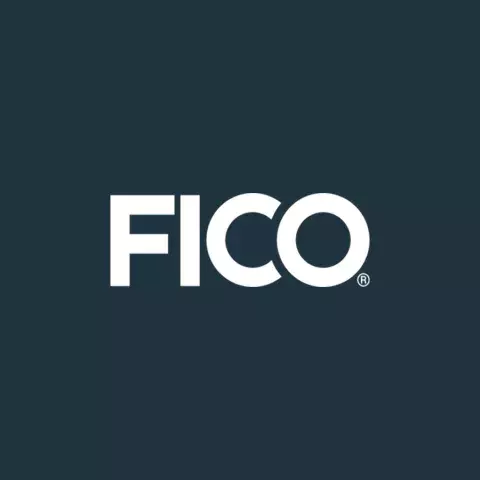FICO® Resilience Index: Credit Lifecycle Strategies are a Requirement
FICO® Resilience Index tools that measure consumer resiliency, benefit lenders in a recessionary environment

Looming concerns driven by prolonged inflation, sustained commodity price increases, the pandemic’s lingering impact on supply chains, and geopolitical conflicts are being widely discussed as potential recessionary triggers. Supporting customers with the tools they need will aid in overcoming economic volatility, help them build stronger portfolios, and diversify assets to meet their future goals.
How can lenders build, manage, and secure credit portfolios in today’s uncertain market environment? A panel of credit risk experts discussed this question at length during a FICO® World 2022 session entitled “Resilient Credit Lifecycle Strategies are the New Norm.”
David Shellenberger, Vice President of Product Management, FICO® Scores, moderated the session and kicked off the discussion with a question about gaining a pulse on consumer resilience throughout this pivotal economic cycle.
The panelists responded with a common theme: amidst the threat of a downturn there is an opportunity, across credit lifecycles, to proactively strengthen portfolio resilience by sharpening measures of consumer sensitivity to economic stress.
Building resilience into credit portfolios
In uncertain environments, lenders seek ways to address credit risk management gaps likely to emerge with a potential recession. A renewed focus on portfolio resilience is key, especially in the face of economic stress.
Shree Pragada, Head of Analytics, Fifth Third Bank, outlined how current economic volatility requires lenders to fully assess the economic conditions which provide an opportunity to increase growth by attracting more resilient borrowers.
“Given the current economic cycle,” Shree explained, “lenders need to understand the overall lending environment. Is it healthy and expanding, overheated and inflationary or unstable and deteriorating? How much brush or combustible material has been building up on the forest floor, so you can gauge whether the next forest fire will be small and manageable or catastrophic and devastating.”
Mohit Dhillon, Managing Director of Quantitative Analytics, Barclays Bank, expressed similar views, “There are some serious concerns because a lot of existing models, both front and back-end such as stress testing, haven’t been calibrated in a period where there is a squeeze on affordability or inflation. So, questioning the validity of those models and making adjustments is important.”
Mohit added, “Until we see what comes out of the pandemic and what inflation does to losses, the case for assessing resilience-based customer segmentation for customers is critical.”
Acting on the foreseeable recovery
The panelists highlighted what a recession might drive and noted a possible recovery with the potential to widen the economic gap between resilient and sensitive consumers.
“Lenders also need to understand,” Shree said, “two things from a customer perspective: how much debt to offer and how resilient the customer is to handle their debt. The customer story remains incomplete without the second piece of information.”
Mohit advised lenders to understand what the new normal will look like and how to gauge credit risk profile uncertainty.
With payment rates so far being on track and delinquencies low, Mohit noted, “There is only one direction that this can head, so it’s key to think about what this means for how we practice risk management and how effective and adaptable our existing tools are.”
Leveraging FICO® Resilience Index to keep credit flowing
In June 2020, FICO announced the FICO® Resilience Index, a new analytic tool designed to empower lenders with additional insight to assess consumer credit risk during uncertain economic conditions. Building on FICO's legacy of innovation for over 30 years, the FICO Resilience Index is designed to rank-order consumers with respect to their resilience or sensitivity to an economic downturn, offering a powerful complement to the FICO® Score for an array of use cases. The latest version of FICO® Resilience Index (version 2) delivers significant gains in resilience predictive power across account-management and other use-cases, with rank-ordering improvements during stressed economic periods of up to 80%. Equipped with the new capability to factor consumer-level resilience insight into decisions, lenders can better maintain profitable relationships with existing customers and continue to grow their account base through different economic cycles.
The FICO® Resilience Index is an empirically derived and statistically sound credit scoring system that was developed and validated in accordance with regulatory requirements of credit risk model governance.
Underscoring this point, Mohit recalled, “When we discussed using FICO® Resilience Index with our auditors and regulators, they applauded our forward-thinking. A lot of research is done across the credit lifecycles and with FICO Resilience Index there is excitement because we’ll study the lifecycle to see what emerges out of the latest data from the pandemic. There will be early signals and these signals are very powerful, especially when FICO Resilience Index is combined with the lender’s internal tools and data.”
Panelists reiterated that now is the time to use FICO® Resilience Index to gauge portfolio risk during times of economic stress. FICO has begun to see examples of these early proof points as referenced in this blog.
FICO® Resilience Index provides a perspective to understand customer resilience to the economic crisis as it will provide a gauge on portfolio health and pay-as-agreed probability.
For more information about FICO® Resilience Index, visit our FICO® Resilience Index product page or contact ScoreSupport@fico.com.
Popular Posts

Business and IT Alignment is Critical to Your AI Success
These are the five pillars that can unite business and IT goals and convert artificial intelligence into measurable value — fast
Read more
FICO® Score 10T Decisively Beats VantageScore 4.0 on Predictability
An analysis by FICO data scientists has found that FICO Score 10T significantly outperforms VantageScore 4.0 in mortgage origination predictive power.
Read more
Average U.S. FICO Score at 717 as More Consumers Face Financial Headwinds
Outlier or Start of a New Credit Score Trend?
Read moreTake the next step
Connect with FICO for answers to all your product and solution questions. Interested in becoming a business partner? Contact us to learn more. We look forward to hearing from you.
